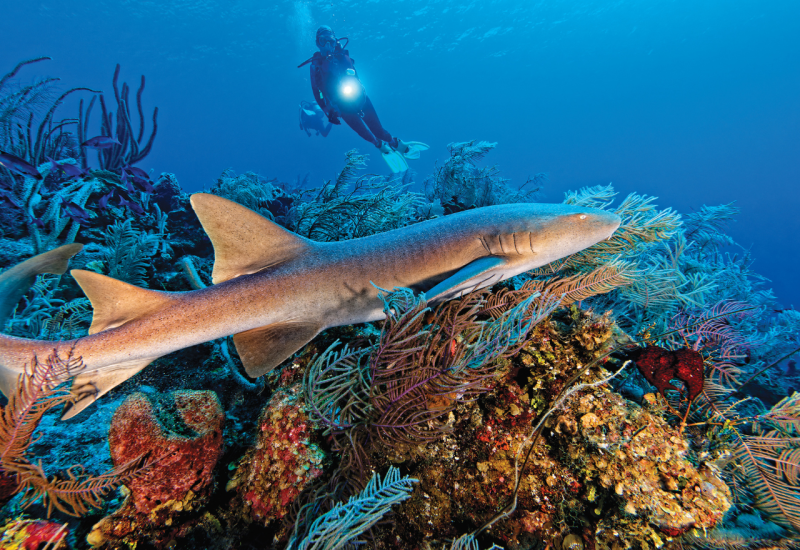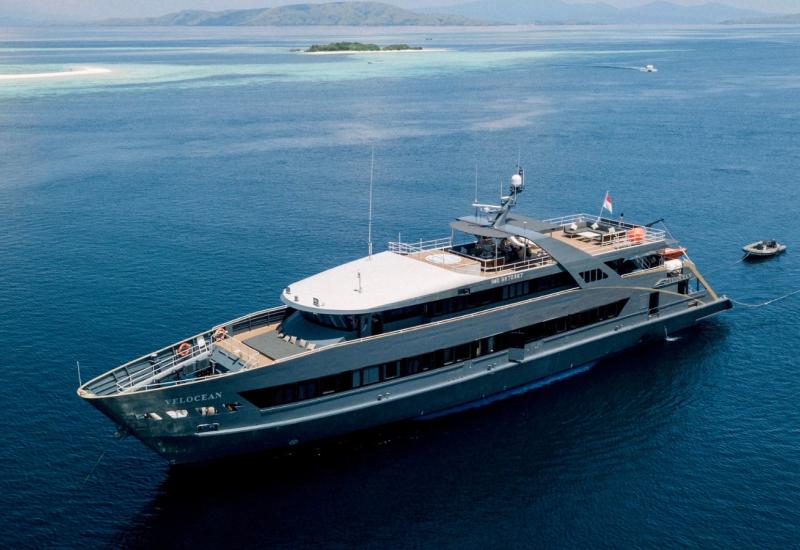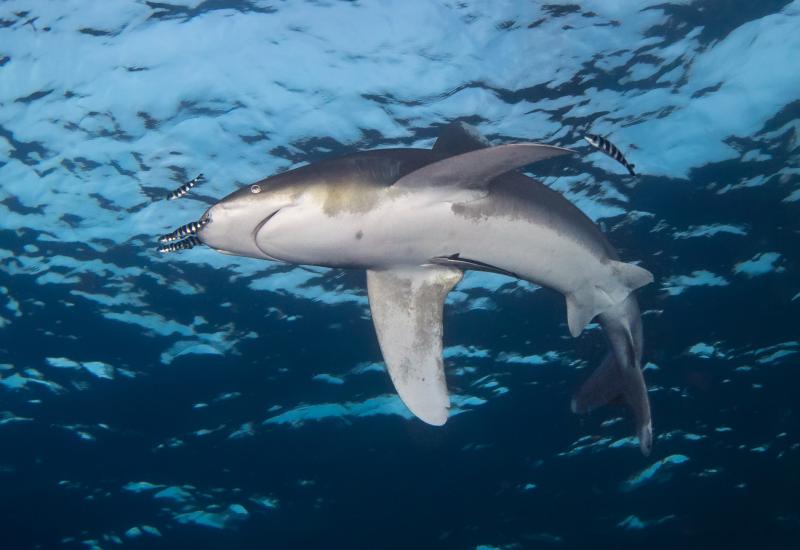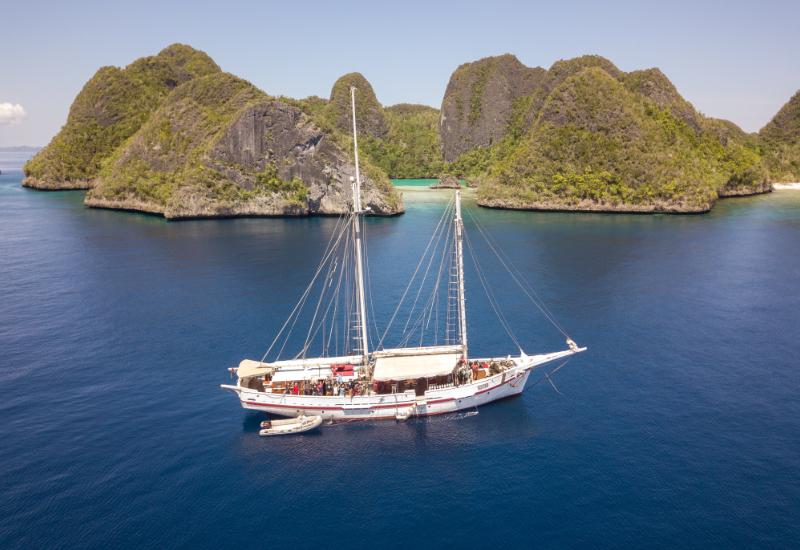Live-Aboard Legend: Peter Hughes and the DivEncounters Alliance
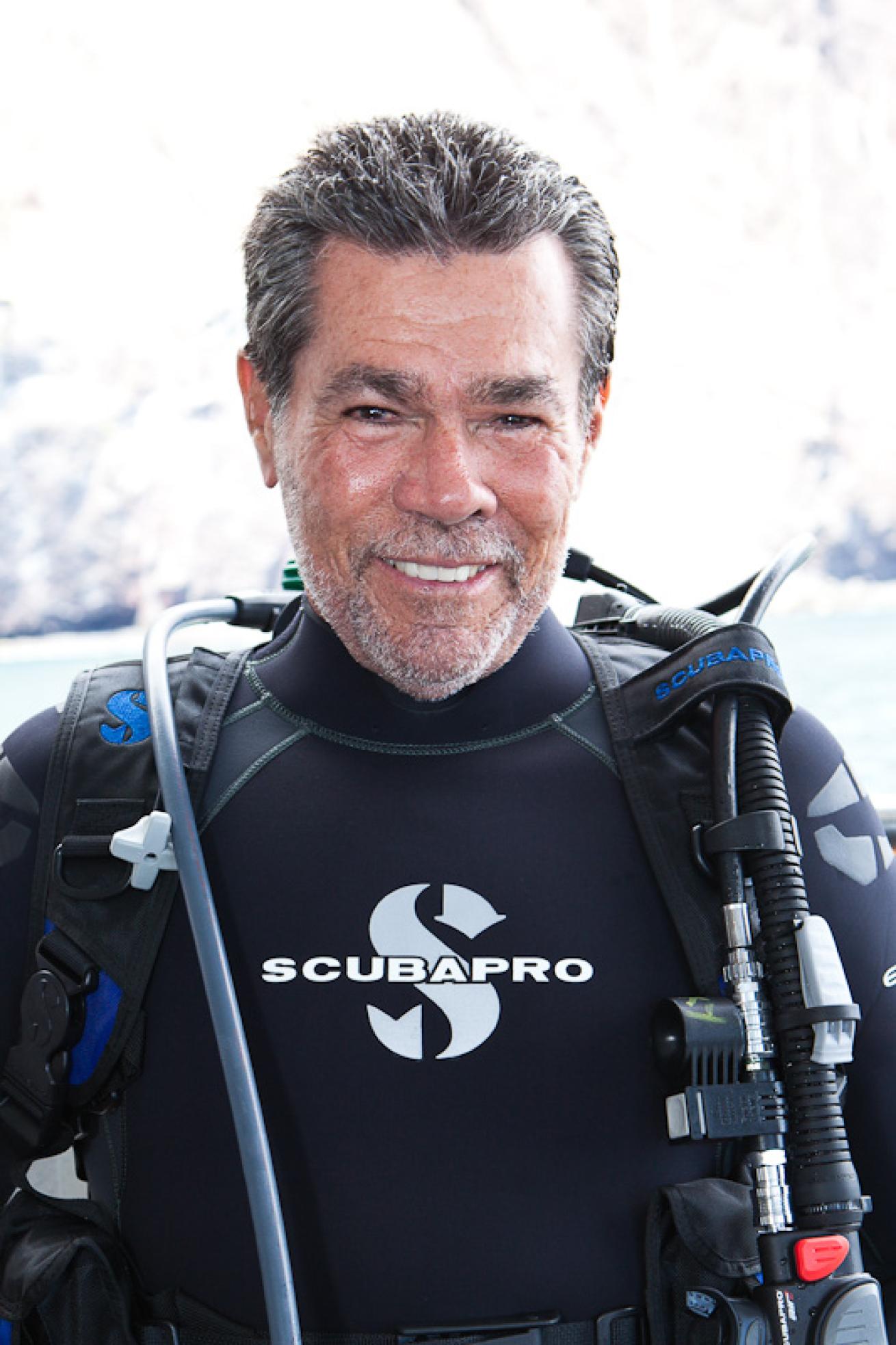
Brought to you by: DivEncounters Alliance

Peter Hughes knows a thing or two about live-aboards, and he has a spot in the DEMA Hall of Fame to prove it. In 2011, Hughes received the DEMA Reaching Out Award for helping to evolve the live-aboard diving industry over the past three decades. That same year, after spending more than 25 years building his former live-aboard company, Peter Hughes Diving, Inc., the 40-year scuba diving veteran threw all of his expertise and energy into a new live-aboard venture, the DivEncounters Alliance. We sat down with Hughes to explore his illustrious (and interesting) dive career, the growth of DivEncounters Alliance, and what this association of some of the world’s best independent live-aboard dive boats has to offer divers.
What is the DivEncounters Alliance? It is the bringing together of what I saw to be the best individually owned and operated live-aboards in the best dive destinations in the world today. Bringing them together as this alliance, this umbrella. Not a fleet, but an alliance that is able to pool resources for certain things that are very difficult for a one-boat owner to do. Much more importantly, it also gave us the opportunity to give our customers, passengers and guests certain perks when they stay diving within the alliance.
What is DivEncounters’ mission? To provide people with the confidence to book with the best dive live-aboards in the world.
Which live-aboards are currently part of the DivEncounters Alliance and what destinations do they cover? The principal partners are the Galapagos Sky in the Galapagos; the Solmar V in Socorro and Guadalupe; the Orion in the Maldives; the Waow — a sailing schooner — in Indonesia; the Atlantis Azores in the Phillipines; the Caribbean Pearl II in Utila of the Bay Islands in Honduras; and as a affiliated member but not a full partner, the three Undersea Hunter boats — the Argo, the Undersea Hunter and the Sea Hunter. They are on a different status, because it is one company with three boats.
What does DivEncounters offer divers? Once you dive with one of our boats, you immediately qualify for our Alliance Awards. So long as you stay diving within the Alliance — on the same boat or with any of the different partner vessels — within an 18-month period, you get these perks. The most valuable is the free nitrox, and you also get a 5.49 percent discount on the price. A lot of the boats have boutiques and serve alcohol, so you get a $50 onboard credit for things like that. Some boats, not all, offer a free hotel night if you have to stay on the way in or the way out, and some boats offer free cabin upgrades when available. So Alliance Awards are one of the big advantages, and the other advantage is the trust and faith that you’re booking the best. If you have any faith in the reputation I’ve tried to build over the years, I stand up and make a statement that “This is the best there is in Socorro” and “This is the best there is in Cocos” or “This is the best there is in Maldives.” So hopefully when you book it, you’re in a happy place and you feel safe and you get what you expected.
What is the most exciting recent development at DivEncounters? Well, our newest partner is the Caribbean Pearl II in the Bay Islands, and we are very happy to have them with us. That’s exciting for us because until they came aboard we had nothing in the Caribbean, and we like to be a worldwide operation. We had the eastern Pacific, the tropical eastern Pacific, the western Pacific and the Indian Ocean, but we were lacking over here in the Caribbean and the Atlantic. So we are very happy and it’s exciting to bring a boat in so close to home where people who haven’t done a live-aboard before and want to try live-aboard diving have a nice relatively inexpensive trip where they can get in and get out and see what it’s like. Then they immediately qualify for our Alliance Awards.
Where are you hoping to take DivEncounters? We like where we are. We only take on one boat in any geographic area, so we’re not out there trying to be the biggest by any means. Expansion for us, if it comes to the door, we will look at it and if it looks good we will take it. But we’re not out there hunting it in any way. We just want to be the best — not the biggest — at what we do, so we like where we are.
In addition to DivEncounters, what career achievements are you the proudest of? That is really tough. I’m really proud of being able to leave Trinidad and Tobago on my first visit to the United States 40-plus years ago and convince the YMCA to let me sign up for the Instructors Institute. They told me if I could do certain water tests successfully they would let me sit in on the whole two-week program. Of course, doing the water tests was like getting out of bed for me at that time. I had been in the water all my life spear fishing down in Trinidad and Tobago, so to go from nothing to YMCA instructor was pretty good.
Then in 1974, I ran the first-ever YMCA Instructors Institute that was held on foreign soil. We put it all together and ran the institute at Anthony Keys resort on Roatan. We did it three years in a row and that was a pretty big accomplishment.
More recently in 2011, I received the DEMA Reaching Out Award and was inducted into the DEMA Hall of Fame because of some the changes I have made in the land-based operations and in the live-aboard industry and live-aboard operations. I was very proud of that achievement.
Some of the systems my wife and I developed at Dive Bonaire are now the standard around the world for land-based operations. The way the boats are laid out, the way compressor systems are set up, etcetera. Then in the liveaboard industry when we built the Wave Dancer. In 1992, my wife insisted that everyone have in-suite facilities. She refused to “share facilities with strangers” as she put it, and we had a very limited number of bunk beds. She insisted on having twin beds side by side that could be put together to make a king-sized bed if there was a couple in there or twin beds if there were two guys in there. That completely changed the approach, which had been bunk beds in small rooms and one toilet and shower at the end of the hallway. The boats that are coming out today — that’s where it all started. Like The Waow in Indonesia, you’ve never seen anything like it.
Why do you love diving and what motivates you every day to stay in it? My motivation today is different than before. When I started, it was because I loved it and wanted to share it with a lot of people. And, quite honestly, it was a way I thought I could have a job without having to work. I was lazy; never did much in school. But my motivation has changed considerably since. Right now the motivation that keeps me going every day is my concern over the condition of the world in general, but specifically the oceans. The deterioration that I have seen in the areas where I have been diving since I was a child is just frightening. And if there is anything I can do in some small way to slow it down that’s what keeps me going on a daily basis.
What was your first dive like? Scary as hell. I was in Tobago. It was with a gentleman named Bill Petry from Atlanta, Georgia. He was down there to start a summer camp for kids. He was an American and the camp was designed for kids from the southeastern United States. I was not an American. I was from a British family that had immigrated to Trinidad and happened to be there on vacation. The house we were renting had a telephone. He did not have a telephone and we found him in the house using the telephone one day. I got to know him and he just decided he could teach me how to dive when I showed an interest. And so it was a double-hose regulator, a swimsuit, and a harness with all sorts of straps – a crotch strap, a stomach strap, a safety hitch, and then a lead belt around that. And when you started to suck hard, you pulled the J valve and it was time to come up. That’s what it was for me.
What is your favorite type of dive? I’ve always liked to go deep. I used to do it with some abandon, but now I’m much more cautious. Obviously as you get older and with all the new equipment available to help us go deep, I don’t see it being as dangerous as it used to be but for some reason I like the peace and tranquility of the 150-foot-down dives toward the 200-foot level. A little narcosis sets in but I seem to deal with it well and I always manage to come back. But there is just a peaceful silence and deep, clear-blue waters. Anywhere it’s a sharp drop, clear blue and sunshine above, that’s my happiest place in life.

